
Managing Travel for Planned Special Events
Chapter Six. Traffic Management
Plan
Page 7 of 9
Traffic Control Plan 
Overview
Freeways represent corridor flow routes serving event patrons and participants destined to/from a planned special event from various parts of a region and beyond. These corridor flow routes connect to local, street-level flow routes that, in turn, serve event venue parking areas. A freeway interchange marks the point of connection, or target point, between corridor flow routes and local flow routes. Together, the three entities comprise the roadway system servicing a planned special event. The scope of traffic control expands and contracts, proportionally to system performance, during event ingress and egress.
The keys to successful transportation system management, including traffic and transit, during planned special events include:
- Real-time surveillance
- Open communications
- Planned response
- Rapid implementation
Planned response requires a detailed traffic control plan that facilitates a proactive traffic management team response to system deficiencies and unexpected events. The other keys depend on technology applications, such as remote surveillance and automated control of traveler information and traffic control devices, in addition to inter-jurisdictional coordination and collaboration.
Transportation system management typically involves state DOT operating freeways and county/local agencies operating streets and intersections along local flow routes. Planned special events place a premium on information sharing (e.g., CCTV feeds, traffic conditions, traffic incidents, etc.) between these agencies, through local/regional TMC operators and/or agency supervisors at the event command post. This information, and subsequent traffic management team collaboration, drives stakeholder selection and implementation of traffic control techniques.
Freeway Traffic Control
The main objective of freeway management during planned special events involves minimizing freeway mainline congestion. Freeway traffic control tactics implemented in response to local traffic flow or ramp operation degradation preserve freeway mainline operations. Freeway traffic control and management strategies for planned special events include traveler information dissemination and interchange operations.
Traveler Information
Traveler information disseminated upstream of freeway interchanges serving an event venue effectively: (1) introduces all freeway users to critical traffic management plan components affecting traffic flow in the vicinity of the event venue and (2) facilitates freeway lane management as motorists learn of temporary freeway ramp control tactics and/or downstream lane closures that warrant a lane-change. Under lane management, freeway operators strive to reduce turbulence at ramp junctions, weaving areas, and lane drops by alerting motorists to make necessary mainline lane-changes as soon as possible. This also reduces the level of uncertainty and potential indecision by drivers destined to the planned special event.
Common freeway operator methods of disseminating en-route traveler information to freeway users include use of:
- Changeable message signs
- Highway advisory radio
- Telephone information systems (e.g., 511 service)
The event planning team should develop CMS and HAR message sets specific to planned traffic management and control, during event ingress and egress, on the day-of-event. Supplemental planned message sets should exist for all special event contingency scenarios considered. The traffic management team can reference message boilerplates for other unexpected events such as traffic incidents. If stakeholders utilize 511 for planned special event travel management, then the event planning team should establish protocol for updating 511 recordings. This may involve coordinating with an agency office (e.g., state DOT headquarters) outside the region where the planned special event takes place. The overall advance planning effort improves traveler information accuracy and timeliness on the day-of-event.
En-route traveler information consists either of pre-event or day-of-event information. Prior to the event, permanent and portable CMSs located on freeways serving a planned special event can indicate that an upcoming planned special event may affect corridor travel or cite planned freeway ramp closures. In addition, CMS message sets can advise motorists to tune to an HAR frequency for a message containing additional, detailed information. Table 6-31 lists some HAR pre-event message considerations. These roadside traveler information device messages should appear a few days before the event, including one weekday to inform commuters that use periodically the freeway corridor on weekends. This strategy also informs visiting event patrons that arrive to the host city prior to the day-of-event.
Table 6-32 indicates some day-of-event message considerations.
Table 6-33 provides a range of CMS message templates for planned special events. To obtain specific and detailed guidance on the operation of and/or message design for large permanent CMSs or portable CMSs, practitioners should consult the FHWA report Guidelines for Changeable Message Sign Messages.(16) For example, Figure 6-38 shows a message displayed on a portable CMS positioned upstream of a freeway interchange serving event patron traffic.
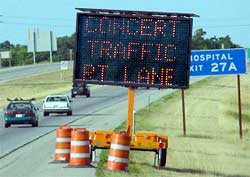
Figure 6-38. Portable Changeable Message Sign (Photo courtesy of the Wisconsin DOT.)
Day-of-event HAR messages include directions on accessing local flow routes to a venue, road closure details, and event traffic and parking restrictions. Activation of HAR sign beacons should occur on the day-of-event only. By taking into consideration travel speed and HAR signal range, format HAR messages so that motorists can listen to each message at least twice. Ensure portable HAR coverage areas do not overlap with adjacent HAR signals.
Interchange Operations
Management of freeway interchange operations for planned special events involves maximizing ramp capacity and preventing freeway mainline congestion. Interchange ramps adjoining a freeway and modified local event traffic flow route may represent a system bottleneck if operators fail to improve interchange capacity and operating efficiency. Traffic flow breakdowns can occur on ramps, at weaving areas, or at ramp junctions. Proactive interchange traffic control focuses on minimizing freeway mainline congestion and, during event egress, congestion spillback to local flow routes and adjoining event parking areas.
Table 6-34 presents interchange operations tactics for planned special events. Tactics such as ramp closures and rolling roadblocks represent short-term congestion mitigation measures deployed by the traffic management team on an as-needed basis. Other control tactics, such as the temporary elimination of a freeway weaving area shown in Figure 6-39, comprise the base traffic control plan for the planned special event and operate for a sustained period of time. Law enforcement officers can temporarily close ramps using their cruisers. However, other techniques that reduce valuable personnel requirements include using Type 3 barricades and traffic cones for longer closures. Figure 6-40 shows an example of reinforcing a barrier line, by deploying traffic cones coupled with pedestal-mounted signing, to prohibit late diverges from a freeway mainline. Freeway operators may develop new ramp metering plans based on forecasted traffic volumes and the location of controlling bottlenecks identified through analysis and modeling.
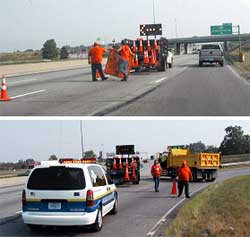
Figure 6-39. Temporary Elimination of Freeway Weaving Area
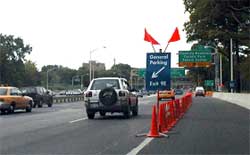
Figure 6-40. Prohibition of Late Freeway Diverge
Freeway and interchange operations management during planned special events demands real-time surveillance and control capabilities. Outside of a permanent TMC, wireless and Internet connections allow the traffic management team remote access to CCTV in addition to CMS and HAR devices. As shown in Figure 6-41, freeway operators stationed at an event command post can view CCTV video at critical locations and, in turn, change CMS messages via a laptop computer or HAR messages through a cellular telephone call.
Street Traffic Control
The central traffic control strategy for local flow routes serving a planned special event involves emphasizing throughput. Tactics that increase street capacity include a combination of: (1) on-street parking restrictions, (2) vehicle travel on road shoulders, and (3) alternative lane operations. Streets connecting freeway/arterial corridor routes and venue parking areas characteristically serve a predominant directional traffic flow during ingress and the reverse flow during egress.
The following section examines alternative lane operation techniques for handling high-volume flow in one direction.
Alternative Lane Operations
Alternative lane operations comprise two categories:
- Reversible lane operation
- Contraflow operation
Reversible lane operation involves using one or more travel or auxiliary (e.g., two-way left turn lane) lanes for travel in the opposite direction. The street or highway operates as two-way; however, additional travel lanes serve traffic in the predominant direction of flow.
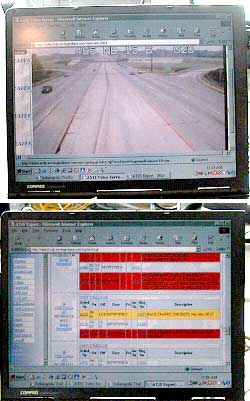
Figure 6-41. Remote Traffic Surveillance and Management
Contraflow operation involves converting a roadway corridor from two-way to one-way operation only.
Major metropolitan areas, such as Washington, D.C., use daily reversible lane (see Figure 6-42) and contraflow (see Figure 6-43) operation to efficiently handle commuter traffic to/from the downtown area.
The application of alternative lane operations to streets during a planned special event creates an express route between an event venue and high-capacity freeway/arterial corridors. For instance, Figure 6-44 shows contraflow operation used during event traffic egress to facilitate rapid clearance of venue parking areas. An alternative lane operation for freeways involves designating an "express lane(s)" for through traffic. Median crossovers at section termini permit access to designated reversible lanes. In order to avoid congestion at the downstream merge point, right-lane traffic diverts upstream of the merge via an exit ramp to another freeway or arterial. Though rare, stakeholders may consider alternative lane operations for freeways or other divided highways in rural areas only.
Table 6-35 lists disadvantages of alternate lane operations on divided highways.
| Consideration |
|---|
|
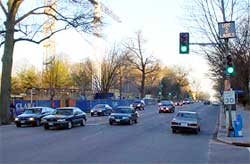
Figure 6-42. Daily Reversible Lane Operation
Three key elements in developing an alternative lane operations plan include lane balance, markings, and enforcement. Key considerations regarding lane balance include:
- The success of any plan stems from achieving lane balance at the downstream terminus of a reversible lane or contraflow section. The number of lanes exiting an alternative lane section should not exceed the number of available receiving lanes at the end of the section. Otherwise, congestion will occur as a result of traffic merging at the section end.
- An alternative lane street section either terminates at a freeway interchange or street intersection.
- To effect lane balance, each lane in the alternative lane section must have a dedicated receiving lane. As a result, select travel lanes may become an exclusive turning lane at the end of the section.
- Temporary signing must inform motorists of lane destinations and restrictions before they enter an alternative lane section.
The following represent common methods of designating reversible lanes:
- Lane control signals
- Roadside signing
- Physical markings such as traffic cones and movable barriers
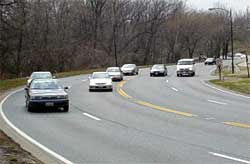
Figure 6-43. Daily Contraflow Operation
Figure 6-45 illustrates the use of lane control signals for temporary reversible lane operation in a roadway construction zone. These signals assist motorists in gaining a clear understanding of the scope of reversible lane operation in effect. Similar lane control signal applications apply to planned special events as well.
Reversible lanes require additional enforcement, particularly at section termini. Law enforcement should monitor section operation and ensure drivers maintain a relative safe operating speed. This applies even when the alternative lane section operates congestion-free. If traffic cones delineate travel lanes, then high-speed traffic may strike cones or cause them to blow over.
Management and Monitoring
The management of traffic traversing a local flow route on the day-of-event involves route guidance and monitoring of traffic control initiatives.
Aside from equipment quantity limitations, local street right-of-way and the presence of lateral obstructions may limit the placement of portable CMS at regular intervals along a local flow route to guide drivers. Instead, the event planning team should design special route marker signs for guiding motorists to venue parking areas and pick-up/drop-off locations. Each route marker may consist of a color-coded letter or symbol. Figure 6-46 shows an example route marker sign for a particular special event parking area. When erected along a local flow route, the route marker assemblies collectively trailblaze a route to the drivers' destination of choice. As illustrated in Figure 6-47, signs that introduce each route marker should be placed on all freeway and arterial corridors serving the event venue. The event planning team must design and place all route marker assemblies in accordance with standards contained in the Manual on Uniform Traffic Control Devices. Sign fonts must be legible at free-flow travel speeds.
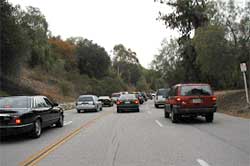
Figure 6-44. Contraflow Operation during Event Traffic Egress
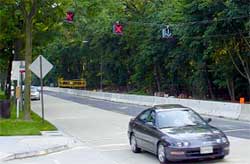
Figure 6-45. Temporary Reversible Lane Operation with Lane Control Signals
The street network surrounding a planned special event venue likely encompasses multiple jurisdictions. In turn, multiple traffic operations and/or law enforcement agencies, representing the local, county, and state level, may participate in street operations control and management on the day-of-event. The event planning team and traffic management team must ensure the traffic control strategies outlined in agency-specific plans complement one another, including contingency actions.
Some larger cities have installed permanent CCTV cameras for monitoring and managing high-traffic arterial operations. Figure 6-48 shows the Daytona Beach, FL TMC that has access to CCTV video for select streets traversing the city. In areas not covered by land-based CCTV, the traffic management team may alternatively utilize aerial surveillance to monitor street operations. The use of law enforcement aircraft allows on-demand surveillance of street corridors. If a TMC and/or event command post can not access video from the aircraft, then the aircraft should carry personnel involved in preparing the traffic management plan. Such personnel can best assess plan effectiveness and transportation system operation at potential problem areas identified during advance planning.
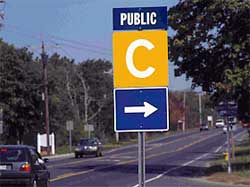
Figure 6-46. Route Marker Sign
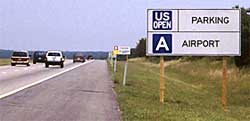
Figure 6-47. Introduction of Route Marker Sign Symbols
The deployment of a portable traffic management system(s) (PTMS) provides a traffic management team with the capability of monitoring traffic operations at critical roadway system locations in addition to disseminating updated traveler information at that location. Critical locations include target points connecting a corridor flow route and a local flow route or key driver decision points on the street network surrounding an event venue. Figure 6-49 shows a PTMS deployment. Table 6-36 lists typical PTMS components. Wireless communication via spread spectrum radio enables the traffic management team to view full-motion video from PTMS surveillance cameras.
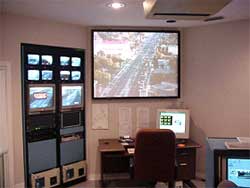
Figure 6-48. Daytona Beach (FL) Transportation Management Center (Photo courtesy of the Florida DOT.)
Intersection Traffic Control
A proactive approach toward developing strategies for controlling intersection traffic during a planned special event aims to:
- Increase intersection traffic handling capacity.
- Improve the orderly movement of traffic.
- Prevent crash occurrences.
The key to maximizing capacity involves simplifying traffic movements and minimizing the number of traffic signal phases. A typical 4-leg intersection has 32 conflict points. After prohibiting all left-turn movements and cross-street through movements, the same intersection has just 4 conflict points. As shown in Figure 6-50, lane channelization limits competing intersection traffic flow which, in turn, facilitates continual flow into a parking area access road or other road segment (e.g., alternative lane section).
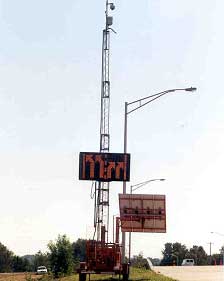
Figure 6-49. Portable Traffic Management System(15)
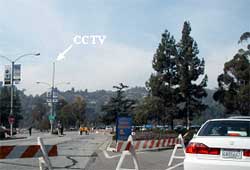
Figure 6-50. Elimination of Competing Intersection Traffic Flow
Figure 6-51 presents an example, based on an intersection serving a Daytona International Speedway parking area, of achieving intersection turning movement lane balance. The plan shows three competing traffic flows that, with proper channelization applied, have unimpeded access to one receiving street segment. Given four receiving lanes, the channelization limited the number of approach lanes to four. When planning to use traffic cones or other channelizing devices for intersection traffic control, mark-out device locations prior to the event for fast and accurate placement on the day-of-event.
Stakeholders can also reduce the number of competing intersection traffic flow movements by initiating a planned road closure. Figure 6-52 illustrates this tactic, where law enforcement blocked a venue ingress route to facilitate event traffic egress through an intersection.
Advance signing of permitted intersection movements improves the orderly movement of traffic. This particularly applies to cases when intersection operation on the day-of-event deviates significantly from daily operations. Figure 6-53 shows a high-visibility sign erected over an intersection approach contained in a planned egress route. Advance sign posting allows neighboring residents and local motorists to become familiar with planned day-of-event traffic control.
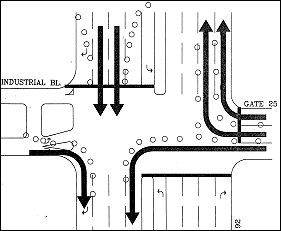
Figure 6-51. Turning Movement Lane Balance(18)
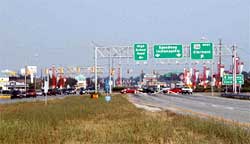
Figure 6-52. Road Block of Ingress Route to Facilitate Egress
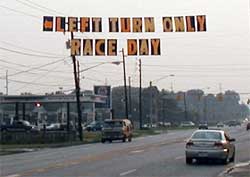
Figure 6-53. Intersection Advance Signing
Traffic control officers have a large role in maximizing intersection operating efficiency. By using positive traffic control, as illustrated in Figure 6-54, officers guide motorists through an intersection. This minimizes headway between vehicles and reduces stops due to driver confusion, particularly at the downstream end of a reversible lane section. The officer commands a driver's attention and works to control the speed of vehicles entering and departing the intersection, thus reducing rubbernecking.

Figure 6-54. Positive Traffic Control
Intersection traffic control changes from event ingress to egress operations. With regard to some street use events, particularly those involving a long event route and/or slow event pace, intersection traffic control complements a system of staged road closures along the event route. Law enforcement escorts the head and tail of the parade or street race. Traffic management team personnel deploy intersection traffic control a certain time (e.g., 15–30 minutes) before the head arrives and restores permitted intersection movements after the event tail clears.
Traffic Signal Operations
The significant change in traffic volume and flow patterns at street intersections in the vicinity of a planned special event venue during event ingress and egress mandates a review of traffic signal timing plans during the event operations planning phase. Except in isolated cases, traffic control officers should not manually control traffic signals on the day-of-event. Field decisions are difficult to make, and a manually controlled signal does not operate on a plan or in coordination with adjacent signals.
Advance traffic signal operations planning involve developing event traffic signal timing plans. Traffic signal timing plans should exist for a range of contingency scenarios that prioritize either major street or minor street traffic movements. Methods to increase time for a specific movement include: (1) selecting an existing plan with a longer cycle length to increase the normal favored phase, (2) implementing a custom plan favoring a minor street phase (3) deploying a contingency "flush" plan, consisting of an extra long phase or cycle, to facilitate movement through a corridor, and (4) increasing time for a movement through manual traffic signal system operator control. In traffic signal system-controlled corridors carrying high traffic volumes on the day-of-event, system operators may enact simultaneous coordination, where all signals within a single corridor turn green at the same time.
A successful traffic signal system management approach for planned special events involves providing a traffic signal system operator with access to real-time CCTV video of intersection operations. Appendix J contains sample protocol for the operation of a centralized traffic signal system, supplemented with permanent CCTV coverage at major intersections, in Anaheim, CA during a permanent venue event.(19) If a real-time communication link to traffic signal controllers exist, then agencies can elect to mount a portable CCTV camera on a traffic signal pole, as shown in Figure 6-55, or other structure for day-of-event monitoring of intersection operations. Real-time monitoring ensures rapid implementation of appropriate timing plans and permits operator manual control as needed.
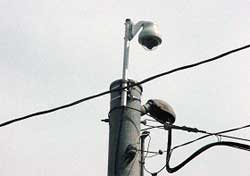
Figure 6-55. Portable CCTV Camera Mounted on Traffic Signal Pole(6)
The traffic management team should include a traffic signal technician, available on the day-of-event for emergency maintenance. Also, the technician could facilitate timing plan downloads in the field, required for isolated signals or in the event that communications with a control center fail. The availability of a roving technician proves effective for making quick changes to traffic signal operations to meet user needs on the day-of-event. Prior to a planned special event, a technician should inspect traffic signals at critical locations, and operators should test traffic signal system control capabilities from the control center.
Plan Specifications
The event planning team designs traffic control plans for use by the traffic management team and traffic control contractors. Table 6-37 contains a traffic control plan development checklist for freeway, street, and intersection management. Appendix K contains example traffic control plans and maps prepared for various planned special events.(18,20) Because equipment demand varies on the day-of-event, traffic control plans should indicate equipment storage area locations and inventory remaining equipment available.
Planned Special Events Traffic Management | Privacy Policy